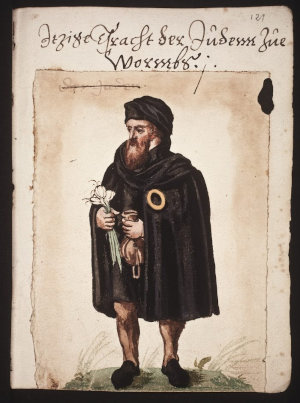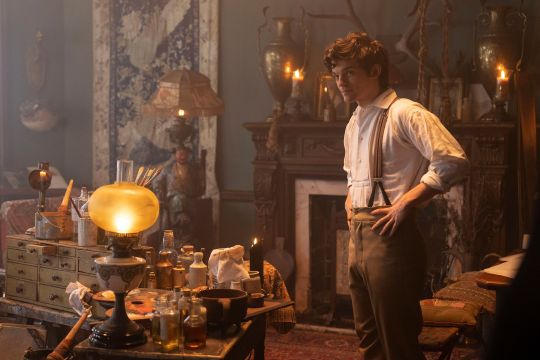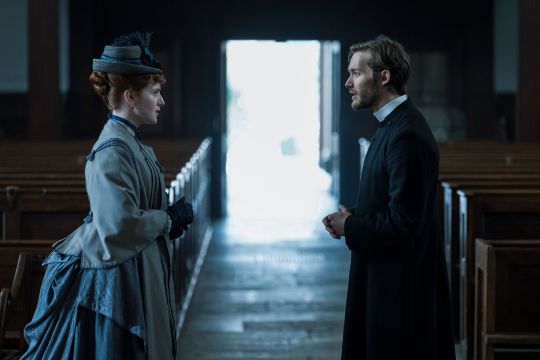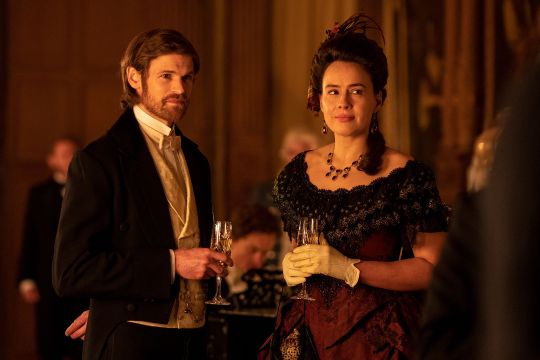#mark mainz
Text


Danny DeVito and Mike Patton attend the after party for the season 2 premiere of "It's Always Sunny In Philadelphia" at The Cabana Club, Hollywood, California, June 25th, 2006, © Mark Mainz/Michael Tran
#it's always sunny in philadelphia#iasip#danny devito#mike patton#actors#pics#musicians#mark mainz#2006#2000s#california#hollywood#soupy's#of course the two (2) photos were taken by two different people
340 notes
·
View notes
Text





Gael García Bernal at Sundance in 2006, promoting The Science of Sleep, photographed by Mark Mainz.

17 notes
·
View notes
Photo

Mark Mainz 2007
2 notes
·
View notes
Text
Oldest evidence of the controlled use of fire to cook food

The remains of a huge carp fish (2 meters/6.5 feet long), analyzed by the Hebrew University, Bar-Ilan University Tel Aviv University, in collaboration with Oranim Academic College, the Israel Oceanographic and Limnological Research institution, the Natural History Museum in London, and the Johannes Gutenberg University in Mainz, mark the earliest signs of cooking by prehistoric human to 780,000 years ago, predating the available data by some 600,000 years.
A close analysis of the remains of a carp-like fish found at the Gesher Benot Ya'aqov (GBY) archaeological site in Israel shows that the fish were cooked roughly 780,000 years ago. Cooking is defined as the ability to process food by controlling the temperature at which it is heated and includes a wide range of methods. Read more.
12K notes
·
View notes
Text
BOYCOTTING FOR PALESTINE
The Official BDS Boycott Targets
Campaigns
Block the boat: End maritime arms transfer to Israel
Ban Apartheid Israel from Sports (FIFA, Olympics)

Consumer Boycotts - a complete boycott of these brands
Disney (SPECIFICALLY MARVEL)
Intel
Axa
Puma
Carrefour
HP
Cevron
Caltex
Israeli produce
Re/max
Ahava
Texaco
Siemens
Sodastream
Intel
Organic Boycott Targets - boycotts not initiated by BDS but still complete boycott of these brands
Macdonald's
Dominos
Papa Johns
Burger King
Pizza Hut
Wix
Divestments and exclusion - pressure governments, institutions, investment funds, city councils, etc. to exclude from procurement contracts and investments and to divest from these
Elbit Systems
CAF
Volvo
CAT
Barclays
JCB
HD Hyundai
TKH Security
HikVision
Pressure - boycotts when reasonable alternatives exist, as well as lobbying, peaceful disruptions, and social media pressure.
Google
Amazon
AirBnb
Booking.Com
Expedia
Teva
Here are some companies that strongly support Israel (but are not Boycott targets). There is no ethical consumption under capitalism and boycotting is a political strategy - not a moral one. If you did try to boycott every supporter of Israel you would struggle to survive because every major company supports Israel (as a result of attempting to keep the US economy afloat), that being said, the ones that are being boycotted by masses and not already on the organic boycott list are coloured red.
5 Star Chocolate
7Days
7Up
Apple
Arsenal FC
ALDO
Arket
Axe
Accenture
Ariel
Adidas
ActionIQ
Aquafina
Amika
AccuWeather
Activia
Adobe
Aesop
Azrieli Group
American Eagle
Amway Corp
Axel Springer
American Airlines
American Express
Atlassian
AdeS
Aquarius
Ayataka
Audi
Barqs
Bain & Company
Bayer
Bank Leumi
Bank Hapoalim
BCG (Boston Consulting Group)
Biotherm
Bershka
Bloomberg
BMW
Boeing
Booz Allen Hamilton
Burberry
Bath & Body Works
Bosch
Bristol Myers Squibb
Capri Holdings
Costa
Carita Paris
CareTrust REIT
Caterpillar
Coach
Cappy
Caudalie
CeraVe
Check Point Software Technologies
Cerelac
Chanel
Chapman and Cutler
Channel
Cheerios
Cheetos
Chevron
Chips Ahoy!
Christina Aguilera
Citi Bank
Carrefour
Codral
Cosco
Canada Dry
Citi
Clal Insurance Enterprises
Clean & Clear
Clearblue
Clinique
Champion
Club Social
Coca Cola
Coffee Mate
Colgate
Comcast
Compass
Caesars
Conde Nast
Cooley LLP
Costco
Côte d’Or
Crest
CV Starr
CyberArk Software
Cytokinetics
Crayola
Cra Z Art
Daimler
Dr Pepper
Del Valle
Daim
Doctor Pepper
Dasani
Doritos
Daz
Dior
Dell
Deloitte
Delta Air Lines
Deutsche Bank
Deutsche Telekom
DHL Group
David Off
Disney
DLA Piper
Domestos
Domino’s
Douglas Elliman
Downy
Duane Morris LLP
Dreft Baby Detergent & Laundry Products
Dreyer’s Grand Ice Cream
eBay
Edelman
Eli Lilly
Evian
Empyrean
Ericsson
Endeavor
EPAM Systems
Estee Lauder
Elbit Systems
EY
Forbes
Facebook
Fairlife
Fanta
First International Bank of Israel
Fiverr
Funyuns
Fuze
Fox News
Fritos
Fox Corp
Gatorade
Gamida Cell
GE
Glamglow
General Catalyst
General Motors
Georgia
Gold Peak
Genesys
Goldman Sachs
Grandma’s Cookies
Garnier
Guess
Greenberg Traurig
Guerlain
Givenchy
H&M
Hadiklaim
Huggies
Hanes
HSBC
Head & Shoulders
Hersheys
Herbert Smith Freehills
Hewlett Packard
Hasbro
Hyundai
Henkel
Harel Insurance Investment & Financial Services
Hewlett Packard Enterprise
HubSpot
Huntsman Corp
IBM
Innocent
Insight Partners
Inditex Group
IT Cosmetics
Instacart
Intermedia
Interpublic Group
Instagram
ICL Group
Intuit
Jazwares
Jefferies
John Lewis
JP Morgan Chase
Jaguar
Johnson & Johnson
JPMorgan
Kenon Holdings
Kate Spade
Kirks’
Kinley Water
KKR
KFC
KKW Cosmetics
Kurkure
Keebler
Kolynos
Kaufland
Kevita
Knorr
KPMG
Lemonade
Lidl
Loblaws
Levi Strauss
Louis Vuitton
Life Water
Levi’s
Levi’s Strauss
LinkedIn
Land Rover
L’Oréal
Lego
Levissima
Live Nation Entertainment
Lufthansa
La Roche-Posay
Lipton
Major League Baseball
Manpower Group
Marriott
Marsh McLennan
Maison Francis Kurkdjian
Mastercard
Mattel
Minute Maid
Monster
Monki
Mainz FC
Mellow Yellow
Mountain Dew
Migdal Insurance
Marks & Spencer
Mirinda
McDermott Will & Emery
Motorola
McKinsey
Merck
Michael Kors
Mizrahi Tefahot Bank
Merck KGaA
Micheal Kors
Milkybar
Maybelline
Mount Franklin
Meta
MeUndies
Mattle
Microsoft
Munchies
Miranda
Morgan Lewis
Moroccanoil
Morgan Stanley
MRC
Nasdaq
Naughty Dog
Nivea
Next
NOS
Nabisco
Nutter Butter
No Frills
National Basketball Association
National Geographic
Nintendo
New Balance
Nutella
Newtons
NVIDIA
Netflix
Nescafe
Nestle
Nesquick
Nike
Nussbeisser
Oreo
Oral B
Old spice
Oysho
Omeprazole
Oceanspray
Opodo
P&G (Procter and Gamble)
Pampers
Pull & Bear
Pepsi
Pfizer
Popeyes
Parker Pens
Philadelphia Cream Cheese
Pizza Hut
Powerade
Purina
Phoenix Holdings
Propel
Ponds
Pure Leaf Green Tea
Power Action Wipes
PwC
Prada
Perry Ellis
Prada Eyewear
Pringles
Payoneer
Procter & Gamble
Purelife
Pureology
Quaker Oats
Reddit
Royal Bank of Canada
Ruffles
Revlon
Ralph Lauren
Ritz
Rolls Royce
Royal
S.Pellegrino
Sabra Hummus
Sabre
Sony
SAP
Simply
Smart Water
Sprite
Schwabe
Shell
Soda Stream
Siemens
StreamElements
Schweppes
Sunsilk
Signal
Skittles
Smart Food
Sobe
Smarties
Sephora
Sam’s Club
Superbus
Samsung
Sodastream
Sunkist
Scotiabank
Sour Patch Kids
Starbucks
Sadaf
Stride
Subway
Tang
Tate’s Bake Shop
The Body Shop
Tesco
Twitch
The Ordinary
Tim Hortons
Tostitos
Timberland
Topo Chico
Tapestry
Tropicana
Tommy Hilfiger
Tommy Hilfiger Toiletries
Turbos
Tom Ford
Taco Bell
Triscuit
TUC
Twix
Tottenham Hotspurs
Twisties
Tripadvisor
Uber
Uber Eats
Urban Decay
Upfield
Unilever
Vicks
Victoria’s Secret
V8
Vaseline
Vitaminwater
Volkswagen
Volvo
Walmart
Wegmans
WhatsApp
Waitrose
Woolworths
Wheat Thins
Walkers
Warner Brothers
Warner Chilcot
Warner Music
Wells Fargo
Winston & Strawn
WingStreet
Wissotzky Tea
WWE
Wheel Washing Powder
Wrigley Company
YouTube
Yvel
Yum Brands
Ziyad
Zara
Zim Shipping
Ziff Davis
#free palestine#palestine#free gaza#israel#gaza#long post#from river to sea palestine will be free#palestinian lives matter#palestinian genocide#free free palestine#current events#fuck israel#anti zionisim#isntreal#defund israel#ceasefire#boycott israel#boycott divest sanction#boycott starbucks#boycott disney#boycott mcdonalds#boycotting#boycott divestment sanctions#my post#boycotts work
760 notes
·
View notes
Photo








Mariah Carey photographed by Vince Bucci, Nathaniel S. Butler, Jamie Squire and Mark Mainz during the 2003 NBA All Star Game Half Time Ceremonies (February 2003).
1K notes
·
View notes
Text




I wanted to celebrate with these two prints that I made, a long history that jewish people, garlic and pickles have.
You can purchase these print via my Etsy shop.
And here's the history:
Already in ancient times, garlic was a central part of celebrating Shabbat. The Talmud devotes several passages to talking about garlic, explaining that it is a key part of Shabbat meals. “With what does one delight in the day of Shabbat?” the Talmud asks, recording an answer provided by Rav Yehuda, son of Rav Shmuel bar Sheilat, who recalled the words of his teacher Rav: “With a dish of beetroot, and a large fish, and heads of garlic” (TalmudShabbat 11b). Elsewhere, the Talmud refers to Jews who celebrate Shabbat as “garlic eaters,” so closely identified was Shabbat dinner and lunch with this fragrant vegetable. (Talmud Nedarim 31a)
Even later on, in the medieval times, the conncetion between jews and garlic was quite close. In fact, it helped the community to survive! In Istanbul, when Jews avoided the plague during a terrible epidemic, it was said that the virus did not penetrate the Jewish area because of the smell of garlic. Jews hung bulbs of garlic outside their doors to ward off the plague as a talisman and sign of good luck. The food historian Gil Marks adds: “Historically, the addition of garlic was among the typical Jewish touches that enhanced local dishes. In many cultures, the presence of garlic marked a dish as Jewish.”
In Germany, in the towns of Speyer, Worms and Mainz were home to large, vibrant Jewish communities. A popular acronym for these areas took the first letter from each town – S, W (which is written with a double “U” sound in Hebrew) and M – echoed the Hebrew word for garlic, shoom. The area was known as Kehillas Shoom (or SchUM) – the community of “Shum”, or garlic in Hebrew.
So identified were German Jews with garlic that some anti-Semitic images persist from the Middle Ages and Renaissance, depicting Jews holding or posing with bulbs of garlic.

But jews and pickles go back for a long time too.
Eastern European Jews brought their pickle-making traditions to America in the late 19th and early 20th centuries and made it famous there. Pickled cucumbers were an important part of their diet due to the need for preserving food in harsh climates in Eastern Europe, where was a common practice to collect and preserve pickles in order to survive winter. Everything could be pickled, from lemons to carrots, with varying degrees of culinary success.
Some took the cucumber, a cheap, accessible vegetable, preserved it in the spring to make them last through the winter and feasted on it throughout the year. Some of those people were Jews and thus the Jewish love affair with pickling began, as a way of keeping vegetables hygienic and healthy.
Fermantation itself as has a biblical orgin in various places. Perhaps the best-known early reference to fermented food is the Passover story in Exodus (12:39): When the Jews were "thrust out of Egypt, and could not tarry," their dough could not rise (through fermentation). We know this unleavened bread as matzo. But when they left Egypt, after some time, their longing for these goods came up: "We remember the fish which we were wont to eat in Egypt for nought; the cucumbers, and the melons, and the leeks, and the onions, and the garlic” It’s likely that the cucumbers mentioned by our Jewish forebears were pickled in some way. Ancient cucumbers tasted extremely bitter and the ancient Egyptians “cooked” their cucumbers by lightly fermenting them. The resulting pickled vegetables were slightly alcoholic, and were seemingly eaten for their mind-altering properties.
#jewish#jumblr#print#pickle#garlic#organic#food#fermentation#pickling#tradition#eastern europe#delicacy#deli#garlics#onions#cucumber#pickles#cyanotype#judaism#jewish history#food history#etsy#sale#art#cyanotype print#sunprint#original#decoration
62 notes
·
View notes
Note
can i request any words/ phrases/ themes linking to the word ‘relic’?
Writing Notes: Relic

Relic - an object esteemed and venerated because of association with a saint or martyr; souvenir, memento
Relics - remains, corpse; a survivor or remnant left after decay, disintegration, or disappearance; a trace of some past or outmoded practice, custom, or belief
Reliquaries - the containers that store and display relics
Where the bones of martyrs are buried, devils flee as from fire and unbearable torture. —St John Chrysostom
Etymology
Middle English relik, from Anglo-French relike, from Medieval Latin reliquia, from Late Latin reliquiae, plural, "remains of a martyr", from Latin, "remains", from relinquere "to leave behind"
Related Words
Afterimage - a lasting memory or mental image of something
Artifact - an object remaining from a particular period
Corpus - the body of a human or animal especially when dead
Decedent - a person who is no longer living; a deceased person
Memento - souvenir
Oddment - something left over; remnant
Oeuvre - a substantial body of work constituting the lifework of a writer, an artist, or a composer
Remnant - a usually small part, member, or trace remaining
Souvenir - something kept as a reminder (as of a place one has visited)
Vestige - a trace, mark, or visible sign left by something (such as an ancient city or a condition or practice) vanished or lost
Martin Luther complained about the profusion of relics and the absurd claims being made for them: "What lies there are about relics! One claims to have a feather from the wing of the angel Gabriel, and the bishop of Mainz has a flame from Moses’ burning bush. And how does it happen that eighteen apostles are buried in Germany when Christ had only twelve?"
Examples
ANCIENT GREEK RELICS. At Athens the supposed remains of Oedipus and Theseus enjoyed an honor that is very difficult to distinguish from a religious cult.
BUDDHIST RELICS. Relics of the Buddha and various saints were (and still are) venerated. Following the Buddha's death, his bones and teeth were divided for the purpose of being used as relics in order to illustrate his teaching of impermanence (anitya). These relics were so valued that they caused armed conflict between factions for possession of them. Afterward, these relics were taken throughout Asia with the gradual spread of Buddhism.
CHRISTIAN RELICS. Since the dawn of Christianity, relics have been an important part of Christian devotionalism. During the Middle Ages, the selling of relics became a lucrative business. The concept of physical proximity to the “holy” was considered extremely important. A pilgrim's possession and veneration of a relic was seen as a means to become closer to God. Instead of having to travel hundreds of miles to become near to a venerated saint, a Christian could enjoy closeness with him/her through their relic at home.
MUSLIM RELICS. Although certain sects of Islam strongly discourage (or outwardly prohibit) the veneration of relics, a very large collection of Muslim relics is preserved in the Sacred Trusts, located in Istanbul, which contains more than 600 treasured pieces in the Topkapi Palace Museum.
The Roman Catholic Church makes a distinction between veneration and worship of relics and icons.
3 Categories of Relics According to the Vatican
First-Class Relics: Items directly associated with the events of Christ's life (manger, cross, etc.), or the physical remains of a saint (a bone, a hair, a limb, etc.).
Second-Class Relics: An item that the saint wore (e.g., sock, shirt, glove). Also included are items that the saint owned or frequently used (e.g., a crucifix, book). An item more important in the saint's life is considered a more important relic.
Third-Class Relics: Anything that has touched a first- or second-class relic of a saint.
Sources: 1 2 3 4 5 6 7
Hope this helps! Do tag me or send me a link to your writing if it does. I'd love to read your work.
#anonymous#writing notes#relics#writeblr#spilled ink#dark academia#writing reference#writers on tumblr#writing prompt#poets on tumblr#literature#poetry#religion#creative writing#writing inspo#writing ideas#writing inspiration#writing resources#langblr#linguistics#words#history
59 notes
·
View notes
Text

Rebus – BBC picks up new series
BY IAN MCARDELL FILED UNDER NEWS
Richard Rankin takes on the role of the famous Scottish detective
The BBC acquired the Scottish crime drama Rebus. Made by Eleventh Hour Films for Viaplay, and based on Ian Rankin’s novels, the series stars Richard Rankin (no relation) in the title role.
The detective has been previously played, as an Inspector, by both John Hannah and Ken Stott.
Rebus
The six-part series has been adapted for the screen by Gregory Burke who reimagines the character earlier in his career. Detective Sergeant John Rebus is drawn into a violent criminal conflict that turns personal when his brother Michael, a former soldier, crosses the line into criminality. Rebus finds himself torn between protecting his brother and enforcing the law to bring Michael to justice.
Gregory Burke To Adapt Ian Rankin’s Rebus Series as Eleventh Hour Drama Black Watch. Both adaptations, have Richard Rankin’s participation. Based on interviews with former soldiers, it tells the story of troops from the then Black Watch regiment serving in Iraq. The play toured around the world and went on to win four Olivier Awards.

Richard Rankin as John Rebus (Image: Mark Mainz/Eleventh Hour Films)
The series promises to explore family, morality and class in an emotionally charged story, set against the Scottish landmarks that Rankin’s readers know so well.
Joining Richard Rankin (Outlander), the series also stars Lucie Shorthouse (Bulletproof), Brian Ferguson (The Ipcress File) and Amy Manson (The Nevers). Plus, Neshla Caplan, Noof Ousellam, Stuart Bowman, Caroline Lee Johnson, Sean Buchanan, Thoren Ferguson and Michelle Duncan.
Filming took place in Glasgow and Edinburgh last year.
Author Ian Rankin says:
“I’m thrilled that Rebus is coming to the BBC. A great cast and a compelling story – I really can’t wait for viewers to see it.”

This is the first time the BBC has adapted Sir Ian Rankin's detective novels. 📸 Getty Images
Actor Richard Rankin adds:
“I am thrilled that Rebus will premiere on the BBC. It’s been an honour taking on the role of Ian Rankin’s renowned John Rebus. A character enjoyed by so many in such a fresh and original adaptation.”
The six-part series is directed by Niall MacCormick (Wallander) and Fiona Walton (Shetland) and is produced by Angela Murray. Paula Cuddy, Jill Green, Eve Gutierrez, Tomas Axelsson, Isabelle Hultén, Niall MacCormick, Gregory Burke and Ian Rankin are the Executive Producers.
Rebus will air on BBC Scotland, BBC One and BBC iPlayer later this spring.

I'm waiting and watching 🍿
#Rebus #BBCScotland #BBCOne # BBCiPlayer #JohnRebus #DetectiveSergeant #Ian Rankin #novel #RichardRankin #EleventhHourFilms #Viaplay
29 notes
·
View notes
Photo

#WordyWednesday
Printer’s device: A printer’s logo, typically included as part of a colophon or on the title page. The first printer’s device was used by Peter Schöffer and Johann Fust’s shop in Mainz in 1462. Printer’s devices are also sometimes called “printer’s marks.”
Image: Scriptores rei rusticae. Venice: Aldus Manutius and Andre Torresani d'Asola, 1514. PA6139 .R8 1514
(via Page — Pulpboard · Rare Books: A Glossary · Special Collections and Archives)
#wordy wednesday#wordywednesday#john henry#special collections#specialcollections#rare books#rarebooks#bookhistory#printing#printing history#printers device
52 notes
·
View notes
Text

Morfydd Clark
As Bridget Conway on Agatha Christie’s “Murder is Easy”
Photo by BBC/Mammoth Screen/Mark Mainz
◼ Morfydd Daily
#morfydd clark#morfydd clark daily#morfydd daily#murder is easy#bridget conway#stills#color edits#morfyddclarkdaily.com
11 notes
·
View notes
Text
















National Read a Book Day
For some people, reading is their ultimate form of relaxation and fun! For others, reading can seem like a bit of a chore. No matter what category you fall into, we encourage you to embrace National Read a Book Day. Usually, it is simply about finding the right book for you. From memoirs to sci-fi; there are so many different types of books out there today, so use National Read a Book Day to find the perfect book for you to really get stuck into. Read on to discover everything that you need to know about National Read a Book Day and the different ways that you can celebrate this date.
Learn about National Read a Book Day
National Read a Book Day is the perfect day to get lost in a good book. You are encouraged to get your head down and get lost in a story, whether fact or fictional. It is also a great day for encouraging others to read books and raising awareness about them. After all, there are many different benefits that are associated with reading. This includes the fact that it can lower stress, as well as improving concentration and memory. Studies have shown that adults who spend time reading tend to take part in activities over their lifetime that are more mentally stimulating when compared with those who don’t, as well as showing a slower cognitive decline. Plus, books are an inexpensive way of learning more about the world and having fun.
There are so many reasons why we recommend reading a book, not only on National Read a Book Day, but whenever you find time out of your bust schedule to do so. Reading a book gives you the chance to sit in your favorite chair and enjoy some peace and quiet after all. Plus, if you are one of those people that love quotes, you are going to find plenty of good ones when reading a book.
You know you’ve read a good book when you turn the last page and feel a little as if you have lost a friend.
Other reasons why we recommend reading books is because most movies out there are based on novels, which often tend to be better than the films. After all, there is only so much that you can cram into a couple of hours on screen, whereas a book is going to enable you to delve deeper into the journey. Plus, books aren’t only about reading great tales. There are a lot of books out there that can change your perspective on life and help you to live life to the fullest. You will be surprised by how much a book like this can change your outlook and bring a lot of good to your existence.
History of National Read a Book Day
The first celebration of National Read a Book Day was around the end of the first decade of the 2000s and was almost certainly the idea of a librarian, probably one who was encouraging youngsters to read a book.
Of course, there are a lot of significant dates in history relating to books. In 1455, people around the World were given the chance to read thanks to the Gutenberg Bible. This was the first book that was mass-printed. It was produced in Mainz, Germany. As the name indicates, it is a Bible. It was produced by Johann Gutenberg and it is written in Latin.
The first book that was printed in English was the “The Recuyell of the Historyes of Troye.” This was printed by William Caxton in 1473. The text is a translation of the French stories about Troy. We’d have to wait several hundred years for the first book to be written on a typewriter. This was Mark Twain’s “Tom Sawyer.”
National Read a Book Day Timeline
4000 BC Writing begins in Mesopotamia
With some rudimentary squiggles and lines that represent pictures of animals, marks are made on clay that are the first parts of writing.
Akkadian Princess and High Priestess Enheduanna writes hymns and signs her name on the clay tablets. These and other early texts are meant to be read out loud.
7th Century BC First organized library is established
In the Ancient Middle East, an Assyrian ruler in Nineveh creates a collection of more than 30,000 cruciform tablets.
1450 Gutenberg invents the printing press
An invention that changed everything for education is developed as a working prototype in Germany by Gutenberg. It is ready for commercial use in just a few more years.
1800s-1900s Literacy rates rise
As the Industrial Revolution brings an increase of accessibility to books, the ability to read also increases for the common person.
How to celebrate National Read a Book Day
Reading is a form of prayer, a guided meditation that briefly makes us believe we’re someone else, disrupting the delusion that we’re permanent and at the center of the universe. Suddenly (we’re saved!) other people are real again, and we’re fond of them.
On National Read a Book Day, it’s not compulsory to read a whole book but the day serves as inspiration to people to read a section of a book they particularly enjoyed, to read with children, to donate a book to a children’s school library, or to host a book reading party.
Although the day was probably thought of with print books in mind, e-books are equally suitable for celebrating National Read a Book Day. The main goal is to encourage reading, as both fiction and non-fiction books open up huge unknown vistas to enquiring minds.
Taking the opportunity to enjoy some time out of the day to relax and read is good for the soul and the mind.
Not only is National Read a Book Day a good day for you to, well, read a book, but it is also a good day to encourage other people to do the same. You can spread the word online about the benefits that are associated with reading. You can share your favorite books, as they may encourage other people to give them a read.
We would also recommend joining a book club. You can join a book club in your local area or you could join an online book club if you don’t want to go to meetings face-to-face. Book clubs are a lot of fun because they encourage you to read more and you can share your thoughts on a good book with others. If you are already a member of a book club, why not use National Read a Book Day to organize a book party for them? You can invite all of the members of the book club and discuss a book. You can all bring a dish that is inspired by the book. This is a great way to have fun and celebrate your love of books together.
Another way to celebrate National Read a Book Day is by organizing your books. Do you have a whole host of books scattered around your home? Maybe you have a book full of books that is simply gathering dust? If so, now would be the perfect opportunity for you to organize your books. You can decide on which books you’re going to keep and which books you won’t read again. For the ones that you won’t read again, you have several different options here. You could take them to a second-hand book store, you could sell them online, or you could donate them to a charity. It’s up to you! You will feel much better for it. After all, clutter can cause chaos in the mind, and this can make it impossible for you to relax and fully embrace a good book.
So there you have it: some of the different ways that you can celebrate National Read a Book Day. Of course, the best way to celebrate this day is by grabbing a good book and getting lost in it.
National Read a Book Day FAQs
When is National Read a Book Day?
National Read a Book Day comes every year on September 6 when people set aside other activities and enjoy the beauty of reading a good, old-fashioned book.
How to Read a Book online?
The internet offers a variety of sources to read online books for free, especially older books that have aged out of their copyright. Project Gutenberg, Open Book, Open Library and The Library of Congress all have free items on offer.
What is National Read a Book Day?
National Read a Book Day is just what it sounds like–it’s a day that encourages people to read a book! Set aside some time to sit in a room and quietly read a book–whether reading for yourself or to a child.
How to celebrate National Read a Book Day?
Whether going to a library, starting a book club, donating a book or buying one, this is the day to enjoy everything that has to do with reading and sharing a book.
How was the first book printed?
The first books were originally written by hand, then block printing was used in China in the Tang Dynasty, followed by the printing press that came into commercial use in 1450.
Source
#Robert Burns Memorial#Edmonton#Norman Bethune by David Pellettier#Jack London#Robert Louis Stevenson Memorial by Bruce Porter#John Steinbeck#writer#National Read a Book Day#6 September#NationalReadaBookDay#New York City#Whitehorse#Gettysburg#Ottawa#USA#Canada#travel#original photography#vacation#tourist attraction#landmark#architecture#cityscape#library#Vancouver#Toronto
2 notes
·
View notes
Text
Julian Fellowes's period drama Belgravia is an adaptation of his novel of the same name. The plot, which follows the trajectory of a family secret from a party in Belgium on the eve of the Battle of Waterloo in 1825 to England's Belgravia neighborhood in the 1840s, is a self-contained story, but in March 2023, MGM+ announced there will be a sequel series to Belgravia, aptly titled Belgravia: The Next Chapter. It will be set in the same world, but in a different time.
"I’m so proud of everything this dedicated team accomplished with the original Belgravia series. I cannot wait for the world to return to Belgravia for this new iteration, expertly crafted by Helen Edmundson," Julian Fellowes, Executive Producer, said in a statement. "Old and new fans alike will be swept off their feet with an emotionally engaging story, memorable characters, and brilliant production and costume design."
Here's what we know about season two:
The second season will be Belgravia: The Next Chapter.

Hannah Onslow as Emily Dunn; Sophie Thompson as Mrs. Dunn; Harriet Slater as Clara Trenchard [MARK MAINZ/CARNIVAL FILM & TELEVISION LIMITED/MGM+]
The show will pick up in 1871, three decades after the events of season one. Per Deadline, "the series tells the love story of Frederick Trenchard, who has grown up as the third Lord Trenchard, and his new love interest, Clara Dunn, who is a newcomer to London society. Unaware that his birth was the product of an affair between his mother Susan and the scoundrel John Bellasis, a troubled childhood has left Frederick deeply insecure, which challenges his courtship of and marriage to Clara."
There's an entirely new cast:

Hannah Onslow as Emily Dunn; Harriet Slater as Clara Trenchard; Sophie Thompson as Mrs. Dunn; Sophie Winkleman as Duchess of Rochester [ROBERT VIGLASKY/CARNIVAL FILM & TELEVISION LIMITED/MGM+]

Harriet Slater as Clara Trenchard. [COLIN HUTTON/CARNIVAL FILM & TELEVISION LIMITED/MGM+]
Harriet Slater will star as Clara Trenchard (née Dunn), "a young, smart, and striking woman, and a fresh face amongst the society of Belgravia, Clara is thrilled by her marriage to the enigmatic Frederick … but as she comes to learn more of her husband and the trauma he carries, Clara finds her marriage will not be as smooth as she first thought and is something she must fight for."

Benjamin Wainwright as Frederick Trenchard; Harriet Slater as Clara Trenchard. [ROBERT VIGLASKY/CARNIVAL FILM & TELEVISION LIMITED/MGM+]
Ben Wainwright will play Frederic Trenchard, "the young and handsome third Lord Trenchard, Frederick takes after his grandfather with a ferocious work ethic, having built a large business empire. Immediately smitten with Clara, he marries her after a whirlwind romance, but brings with him traumas from his past that threatens his newfound happiness."
The rest of the cast is as follows:

Edward Bluemel as Dr. Stephen Ellerby
[COLIN HUTTON/CARNIVAL FILM & TELEVISION LIMITED/MGM+]

Hannah Onslow as Emily Dunn; Toby Regbo as Reverend James Trenchard [COLIN HUTTON/CARNIVAL FILM & TELEVISION LIMITED/MGM+]

Liam Garrigan as Fletcher; Elaine Cassidy as Davison
[MARK MAINZ/CARNIVAL FILM & TELEVISION LIMITED/MGM+]
Edward Bluemel will play Dr. Stephen Ellerby, a young idealistic doctor captivated by Clara
Claude Perron will play French businesswoman the Marquise D’Étagnac
Toby Regbo will play Rev. James Trenchard, Frederick’s estranged brother
Elaine Cassidy will play Clara's lady's maid Davison
Hannah Onslow will play Clara’s older sister, Emily Dunn
Sophie Thompson will play Clara and Emily's mother, Mrs. Dunn.

Benjamin Wainwright as Frederick Trenchard; Sophie Winkleman as Duchess of Rochester.
COLIN HUTTON/CARNIVAL FILM & TELEVISION LIMITED/MGM+
Plus, the show will feature Sophie Winkleman as the Duchess of Rochester, described as "the queen of Belgravia" who sits atop the social hierarchy. Winkleman, also known as Lady Frederick Windsor, is a member of the British royal family. In August 2023, Winkleman opened up to the Daily Mail about the allure of Regency-era romances. "Just the way you compose yourself, the way you speak the words, we are in such a casual era," she explained, "To go back to some kind of formality, you realise how oddly sexy it is, because everything's so out there in this current century. There's actually no intrigue at all, so going back to then, when everything had to be so covered up for the sake of propriety, everything ripples under the surface. It is quite a sensual experience."

Alice Eve as Susan Trenchard. [COLIN HUTTON/CARNIVAL FILM & TELEVISION LIMITED/MGM+]
There's two returning cast members from the original Belgravia: Alice Eve as Susan Trenchard and Richard Goulding as Oliver Trenchard.
Belgravia was intended to be a limited series.
“For me, this is a completed story, although whenever I say this to any of the actors, they disagree with me violently, so I’m not sure we know the definitive answer to that, really,” Julian Fellowes initially said at a preview for Belgravia. “We’ll have to see. If anyone wants any more…”
“We definitely made this as a limited series because it’s really enjoyable at times to have a clear beginning, middle and end,” Gareth Neame, who also worked on Belgravia, said, per The Wrap. “And it’s obviously been adapted from a novel that has a clear ending. So that’s where we are right now. But obviously one never knows. If we find it does really well and we find another way to bring the title back in the future then I guess we would consider that. But right now it’s very clearly a limited series.
Belgravia season two premieres January 14, 2024.

Harriet Slater as Clara Trenchard; Benjamin Wainwright as Frederick Trenchard.
MARK MAINZ
There will be eight episodes in the season. Watch a first trailer:
youtube
8 notes
·
View notes
Text

Actress Shannyn Sossamon from the film Wristcutters: A Love Story poses in the portrait studio at the AFI FEST 2006 presented by Audi at the Arclight Hollywood November 7, 2006 in Hollywood, California. Photo by Mark Mainz/Getty Images for AFI...
5 notes
·
View notes
Text


On September 14th 1507 Edinburgh merchants were granted exclusive privilege of running a printing press.
Another one with dates that differ by a day or so, but all agree it was mid September 1507 thatJames IV granted a Royal Patent authorising Scotland’s first printing press.
You will no doubt be surprised that the printing press with moveable types wasn’t invented by a Scotsman. However, Scots have certainly made good use of the technology since it was invented by Johannes Gutenberg in Mainz, around 1439. It was a good fifty years after Gutenberg’s monopoly was revoked before a press found its way to Scotland. By the arbitrary Incunabulum date of 1500, when around a thousand printing presses were in operation throughout Western Europe and had produced anything between eight and twenty million books, Scotland still lacked a press of its own.
Nevertheless, the Scots hadn’t been idle bystanders as many were educated in France and elsewhere and brought back printed books from the Continent. That’s not to say that Scotds had not made use of this new invention, Some sought out the printing press on the continent and had books published there. It should come as no surprise either that in France some Scots were also employed in the new profession of printing and it was one such Scot who had served his apprenticeship as a printer in France, Androw Myllar that brought the art back to his native country.
Myllar was an Edinburgh bookseller who imported books from England and France, where he learned the printer’s craft in Rouen. When he arrived back in Scotland in 1507, Myllar gained the financial backing of Walter Chepman, a wealthy Edinburgh merchant trader and a man who appears to have had the ear of the King, James IV. Chepman also seems to have gained a lot of the credit for Scotland’s first printed books, but then, he was the money man.
When Myllar went into partnership with Chepman, the two men established Scotland’s first printing press, the building was in Edinburgh’s Cowgate, the building is long gone but the pic shows a plaque marking where it stood. Scotland’s first printed books are known as ‘The Chepman & Myllar Prints’, the earliest of which is dated the 4th of April, 1508, which was an edition of John Lydgate’s ‘The Complaint of the Black Knight’.
Sometimes when searching through sources for my posts I find out other little snippets that connect to other posts, like in the article “Printing Comes to Scotland” which you can read on the link below, I learned that there was an account of The Battle of Flodden made on an early printing press, it is titled “The trewe encountre or Batyle don betwene Englande and Scotland” and while it may have been printed in London, it does give an insight into early bias in print. In the pamphlet it claimed that around 10,000 Scots were put to the sword at Flodden, this figure is used a lot but most historians discount the amount now, but the bias is not in that number, the pamphlet claims that the Earl of Surrey lost only a few hundred at the battle. Now I hark back to previous posts about how good the English are at keeping records, most recently in my post regarding Sir William Wallace’s murder, well records of the payroll show that Surrey, the English commander, lost two-fifths of his own retinue, even with these figures available, Wikipedia, which I look at every day, still states that English losses were a mere 1,500 of their 26,000 army, you do the maths, yes it was a massive defeat for the Scots, but it was a bloody hard fought battle with large casualties on both sides.
Pics are the plaque on the Cowgate, the second an early example of Myllar’s work, the windmill is apparently a pun on his surname.
7 notes
·
View notes
Photo





Ancient Roman Fort with Wooden Spikes Discovered in Germany
The fort was used to protect there silver mines, but 19th-century archaeologists struck the motherlode.
For the first time, archaeologists have discovered wooden defenses surrounding an ancient Roman military base. The fence topped with sharpened wooden stakes, akin to today’s barbed wire, is the kind of fortification known to have existed from ancient writings—including by Caesar—but no surviving examples had previously been found.
The intimidating defense measures are located in what is now the town of Bad Ems in Rhineland-Palatinate, Germany. Excavations on the site began after a local hunter, Jürgen Eigenbrod, noticed faint markings on the ground in a field in 2016. The differences in color in sections of the grain, it turned out, were caused by the remnants of ditches dug by the Romans.
Using geomagnetic prospecting, archaeologists have since discovered evidence of no fewer than 40 towers at the site, as well as a smaller camp, on opposite sides of the valley. The area appears to have only served as a camp for a couple of years before burning down, reports Frankfurt’s Goethe University.
It appears that the ancient Romans were tunneling into the earth, searching for deposits of silver. At first, archaeologists believed that fire remains and melted slag were evidence that the Romans had set up a smelting works to process silver ore.
But the writings of the ancient historian Tacitus reveal that the Roman governor Curtius Rufus’s efforts to mine silver in the area failed in the year 47 A.D. Expecting untold riches, the Romans had set up a heavily fortified base manned by military troops—which explains the barbed wire-like defenses, meant to deter sudden raids.
Unfortunately for them, a rich vein of the precious metal would not be unearthed in the area until millennia later, during archaeological excavations in 1897. There was enough silver there that Romans could have continued mining operations for two centuries—if they had only kept digging.
The remains of the ancient fire, it would seem, came from a watch tower, not a profitable smelting works.
These futile ancient efforts make for a fascinating story—Frederic Auth, the leader of the excavations since 2019, won first prize for his account of the history of the site at the 2022 Wiesbaden Science Slam.
Research and excavations are slated to continue, ledby Markus Scholz, a professor of archaeology and ancient Roman history of Roman at Goethe University; archaeologist Daniel Burger-Völlmecke, and Peter Henrich of the General Directorate for Cultural Heritage in Rhineland-Palatinate. Meanwhile, the ancient wooden spikes are now at the Römisch-Germanisches Zentralmuseum in Mainz.
#Ancient Roman Fort with Wooden Spikes Discovered in Germany#ancient artifacts#archeology#archeolgst#history#history news#ancient history#ancient culture#ancient civilizations#roman history#roman empire
25 notes
·
View notes